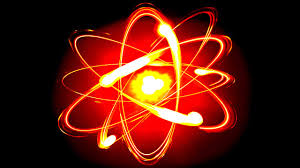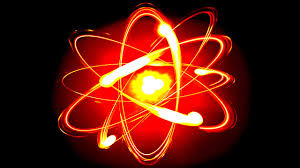
It would be just about 15 years that the world would get power from the grid generated from nuclear fusion according to a major new US initiative. It says that scientists are on the verge of cracking the dream of nuclear fusion.
To enable the shift of fusion from the now expensive science laboratory experiment stage to an economical commercial level, a very different approach compared to other varied attempts will be taken by the scientists of the said project which is a joint venture between the scientists at MIT and a private company. The world’s very first nuclear fusion reactor would be created by the scientists where the amount of energy needed to trigger a fusion would be less than the ultimate energy output for the fusion. For this purpose, the scientists are planning to make use of a new class of high-temperature superconductors.
“The aspiration is to have a working power plant in time to combat climate change. We think we have the science, speed and scale to put carbon-free fusion power on the grid in 15 years”, said Bob Mumgaard, CEO of the private company Commonwealth Fusion Systems. Italian energy firm Eni had supported the private company with a fund of $50 million for the efforts
There is great promise in heh science of fusion as it can deliver a source of energy that would be a zero-carbon one and would be combustion-free. But the problem with commercial viability of fusion is that till now more energy is needed to trigger and sustain the process of fusion compared to the output and therefore it is not a viable source of electricity. This has led many to comment that fusion would always remain an energy source of the future.
Typically, scientists have said ta it would not be at least the next 30 years that viable commercial utilization of fusion would be possible. However, the scientists at MIT are confident that with the use of new superconducting materials for creating ultra-powerful magnets, which is one of the main components of a nuclear fusion process, they would be achieve commercialization earlier.
“The exciting part of this is the high-field magnets”, said Prof Howard Wilson, a plasma physicist at York University who works on different fusion projects.
Forging atoms of lighter elements with those of the heavier ones is the basic concept of fusion. The tight squeezing of atoms of hydrogen leads to the creation of helium and this process of conversion creates huge amounts of energy.
The problem is that the energy that is produced in this process requires heating of the elements to extreme temperatures of hundreds of millions of degrees Celsius. That is hotter than the centre of the sun and is much hotter than any of the solid materials to withstand.
To prevent this from happening, very powerful magnets are put to use by scientists to hold at the center hot plasma – a gaseous soup of subatomic particles, so that it does not touch any part of the container where the process is undertaken.
These days, scientists are able to prepare smaller, more powerful magnets with the help of a new form of superconducting material which is a steel tape that is coated with a compound called yttrium-barium-copper oxide, or YBCO.
“The higher the magnetic field, the more compactly you can squeeze that fuel,” said Wilson.
(Source:www.theguardian.com)
To enable the shift of fusion from the now expensive science laboratory experiment stage to an economical commercial level, a very different approach compared to other varied attempts will be taken by the scientists of the said project which is a joint venture between the scientists at MIT and a private company. The world’s very first nuclear fusion reactor would be created by the scientists where the amount of energy needed to trigger a fusion would be less than the ultimate energy output for the fusion. For this purpose, the scientists are planning to make use of a new class of high-temperature superconductors.
“The aspiration is to have a working power plant in time to combat climate change. We think we have the science, speed and scale to put carbon-free fusion power on the grid in 15 years”, said Bob Mumgaard, CEO of the private company Commonwealth Fusion Systems. Italian energy firm Eni had supported the private company with a fund of $50 million for the efforts
There is great promise in heh science of fusion as it can deliver a source of energy that would be a zero-carbon one and would be combustion-free. But the problem with commercial viability of fusion is that till now more energy is needed to trigger and sustain the process of fusion compared to the output and therefore it is not a viable source of electricity. This has led many to comment that fusion would always remain an energy source of the future.
Typically, scientists have said ta it would not be at least the next 30 years that viable commercial utilization of fusion would be possible. However, the scientists at MIT are confident that with the use of new superconducting materials for creating ultra-powerful magnets, which is one of the main components of a nuclear fusion process, they would be achieve commercialization earlier.
“The exciting part of this is the high-field magnets”, said Prof Howard Wilson, a plasma physicist at York University who works on different fusion projects.
Forging atoms of lighter elements with those of the heavier ones is the basic concept of fusion. The tight squeezing of atoms of hydrogen leads to the creation of helium and this process of conversion creates huge amounts of energy.
The problem is that the energy that is produced in this process requires heating of the elements to extreme temperatures of hundreds of millions of degrees Celsius. That is hotter than the centre of the sun and is much hotter than any of the solid materials to withstand.
To prevent this from happening, very powerful magnets are put to use by scientists to hold at the center hot plasma – a gaseous soup of subatomic particles, so that it does not touch any part of the container where the process is undertaken.
These days, scientists are able to prepare smaller, more powerful magnets with the help of a new form of superconducting material which is a steel tape that is coated with a compound called yttrium-barium-copper oxide, or YBCO.
“The higher the magnetic field, the more compactly you can squeeze that fuel,” said Wilson.
(Source:www.theguardian.com)





